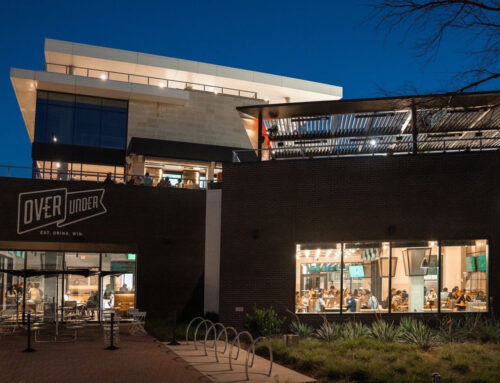When the Lakewood Minyard’s closed in February, some of us were unhappy at what we saw as the end of an era. Others were glad to see it go, good riddance to a store that no longer fit the neighborhood. But what none of us expected was that the site would still be empty 10 months later and might remain empty for another year or more.
What happened to the Whole Foods that was supposed to go there?
That’s the question I’ve been trying to answer for the past couple of weeks. The grocery chain’s fight with the federal government to buy rival Wild Oats, combined with a restructuring of some of its Texas operations, helped delay the new store. That’s understandable. What makes less sense is that much of the delay may be tied to Whole Foods’ announcement that it wants to amend the site’s zoning — even though it knew when it bought the Minyard’s lease that the property was a planned development, among the most stringent zoning in Dallas.
It’s certainly well within the retailer’s right to ask for a zoning change, and this is not going to be a diatribe against another evil developer who wants to destroy the neighborhood. Even the most militant among us are probably willing to give Whole Foods the benefit of the doubt. Rather, I’m asking: What’s taking so long?
How does Whole Foods want to change the zoning? All we can do is make an educated guess, since the company’s spokesman didn’t answer my email or my two phone messages. But it almost certainly centers around parking. Two people I interviewed (who asked to remain anonymous) both said, almost before I got the question out: “I hope this isn’t about parking.”
When Minyard’s renovated the existing building, it built the largest store zoning allowed — about 45,000 square feet. The zoning limits a store to 40 percent of the property size and requires one parking space for every 200 square feet of store. Yet when Whole Foods bought the lease, it said it would tear down the existing structure and build a 50,000-square foot successor.
This should have set my zoning alarm off, but I missed it. The current zoning, unless it’s changed, doesn’t allow a 50,000-square-foot store on that property. Since then, there has been a report that Whole Foods will build a 42,000-square foot store, which I haven’t been able to confirm. Besides, if it’s true, it would appear to make the zoning change unnecessary. Also, Henda Salmeron, the president of the Lakewood Neighborhood Association, reports that the meeting Whole Foods scheduled with her group in September “just kind of fizzled out” and wasn’t immediately rescheduled.
Know, too, as I wrote on our Back Talk blog in October, that the company is required to notify nearby property owners and several neighborhood groups of its plans 30 days before it applies to the city for a change. Through the middle of October, it had not made that application, let alone started the notification process (or sent copies of its proposed design to the city). Even if the process starts this month, it will take at least 13 or 14 months to get the store open, given at least three months for the zoning process and nine to 10 months for construction. That brings us to January 2009 for a store that was supposed to open at this end of 2007.
Aren’t there other options? Let’s assume Whole Foods wants to build something similar to its 60,000-square-foot Preston/Forest store, which is apparently the chain’s current configuration. Why can’t it put underground parking on the site, similar to the garage at Sevy’s at Preston and Northwest Highway? Or how about a small parking garage at the southern tip of the property, taking advantage of the way the land slopes toward the intersection of Gaston and Abrams? Whole Foods might even be able to squeeze in some retail in combination with the garage.
Are these ideas practical? I don’t know. But waiting another year for the store to open isn’t very practical, either.





